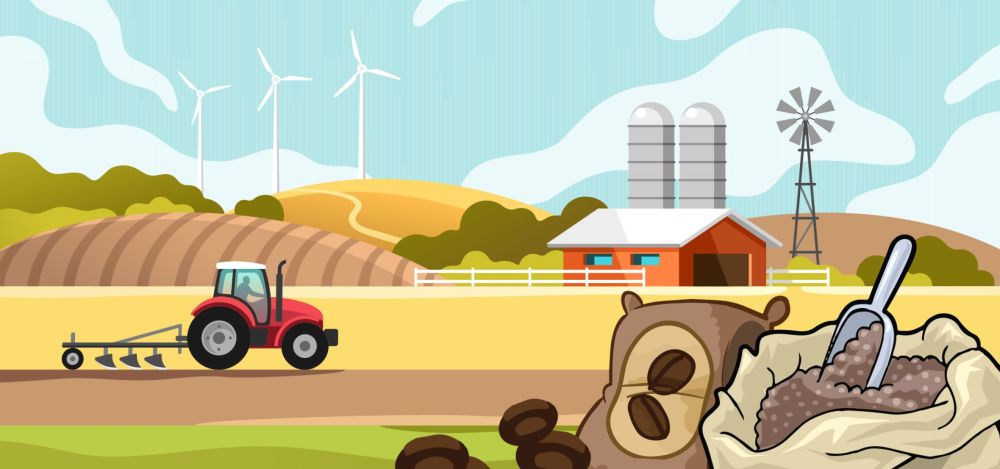Is Coffee Really the Second-Most Traded Commodity
Don’t believe everything you hear about trading commodities.
Just as there are urban legends in the public sphere, there are certain falsehoods that perpetuate in the financial sphere.
One common one? That coffee is the second-most traded commodity.
While it sounds like a nifty and believable enough little factoid, there’s one problem: it’s not true.
Yes, coffee is a commodity — and an important one at that. Some people might even go so far as to say it’s vital to daily life! But in terms of moving the market, it actually lives a lot lower down on the list of top-traded commodities … It’s not even in the top 10!
Want to learn more? Let’s explore coffee’s popularity as a commodity … and talk about some of the actual most-traded commodities in the world!
What are Commodities?
First things first: what are commodities?
Simply put, they’re raw materials. These are things that are used as a component for other production. Think: basic goods like gold, grain, and oil.
Commodities, unlike stocks, don’t depend on a single company or sector — instead, they represent these raw materials or products.
However, like stocks, the value of a commodity can rise or fall based on various things like the market conditions, supply and demand, and the global economy. These price fluctuations are what make them appealing to traders and investors.
Examples of Commodities
There are two primary categories of commodities: hard and soft.
Hard commodities means commodities that are mined or extracted — for example, precious metals and energy-related materials such as coal, gas, and oil.
Soft commodities means commodities that are living or agricultural products — for example, crops like cotton, soybeans, grains, and of course, coffee; it could also include animal products including live cattle and animal products such as hides and meat.
Want to learn more about commodities? Check out this post.
Why is Coffee a Commodity?
Coffee is a commodity because it’s an agricultural product.
However, it’s a unique commodity in that it represents both a raw material and a retail product. Let’s take a moment to discuss the difference.
With coffee, the line can be fine. For instance, either green or roasted coffee could be a commodity AND a product — but a bottle of cold brew coffee would firmly fall into “product” territory.
Is Coffee a Popular Commodity?
The myth of coffee as the second-most traded commodity likely roots back to 2017, when the U.S. Senate Foreign Relations Committee invited Kelly Goodejohn, a Starbucks employee, to dish on the coffee trade.
According to Politifact, in her presentation, she famously said “Coffee is the second-most traded commodity after oil, and 25 million farmers around the world rely on income generated from growing coffee.”
Unfortunately, it’s not quite true.
Per MIT’s Observatory of Economic Complexity (OEC), coffee is actually the 107th-most traded product, with top exporters being Brazil, Vietnam, Colombia, Germany, and Switzerland.
It’s possible that this metric makes more sense if coffee is viewed in terms of its level of market liquidity, but it’s still hard to place coffee at #2 globally.
Nonetheless, coffee is still an important and popular commodity.
What are the Most Traded Commodities?
Now you’re probably wondering … If coffee isn’t the second-most traded commodity, what is? And what’s #1, while we’re at it?
As of 2019, some of the top commodities in the U.S. were reported as being Crude Oil, Natural Gas, and Heating Oil.
fractalerts for Trading Commodities
Having trouble navigating the world of commodities trading? fractalerts could help.
fractalerts is a trade alert service that gives subscribers complete trading plans that the fractalerts team intends on executing, 12-24 before the trade.
These are actual trades that the team intends to make, delivered to your inbox with plenty of time to evaluate the trade and decide whether you’d like to take a position, too.
How do we pick these trades? The service works through a proprietary algorithm that sifts through huge amounts of market data to figure out patterns that could alert potential trades.
Once a trade is identified, it triggers an alert to subscribers.
It used to be that this system was only available to institutional investors and executives. But now, it’s available to individual traders, too!
The results speak for themselves: if you look at the fractalerts 11 year report detailing trade results through 2017, commodities had already accounted for $914,730 in cumulative gains.
Final Thoughts
For savvy investors, commodities can present a ton of potentially profitable trading opportunities. However, whether it’s coffee, oil, gold, or another product you’re interested in, you’ve got to make sure to do your due diligence before diving into a trade.
For more than 10 years, fractalerts has been delivering up to 28.30% in returns per week to subscribers who follow our alerts, which include different market sectors including commodities, forex, and indices.
Our alerts are based on cold, hard data — not feelings or trends. See for yourself what happens when you try the system that fund managers and global banks rely on!
-

The rhytm beneath the noise
-

You Don’t Need a Trading Style. You Need an Edge.
-

Consistency Isn’t the Goal—It’s the Outcome
-

What 2 Quadrillion Data Points Told Us
-

Math and Physics-Based Trading in Any Market Condition
-

Do not worry about anomalies
-

Consistency should not be the goal. Consistency should be the result.
-

Stop canceling fridays
-

The Elliott Wave Forecast is Subjective, Bias Driven And Backwards looking
-

Finding patterns in market data

